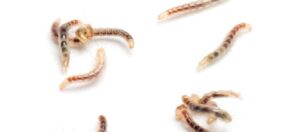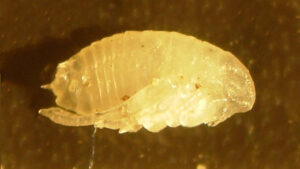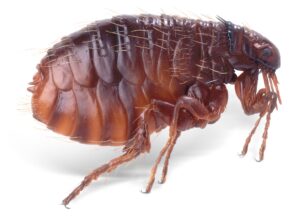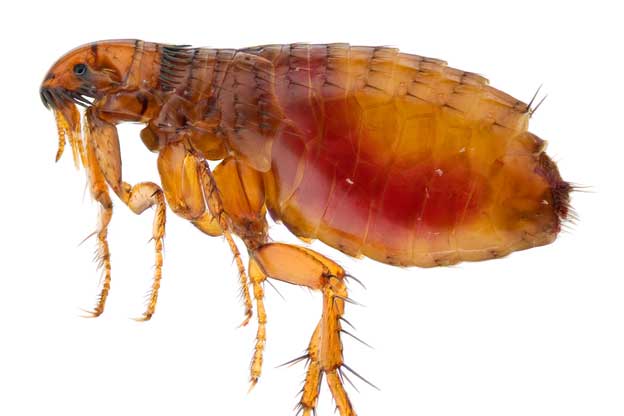Fleas are very common in the UK and the main way they enter your home is via our pets. Cats and Dogs like to show you what they have found but these are always unwanted gifts.
A common sign your pet has fleas is to look for them scratching and generally a bit jumpy. This usually means fleas are present and should be treated immediately to stop the spread. Like Mosquitoes, they are blood-sucking insects and can cause irritation for both the pet and the owner.
Fleas pass through four life stages: egg, larva, pupae and adult.
Stage 1: Egg
Once an adult female flea has found a host and eaten a blood meal she can start to reproduce and lay eggs. These tiny white objects smaller than a grain of sand make it nearly impossible to see.
Once left and the temperature is right the eggs will hatch and form larvae.

Stage 2: Larvae
Flea larvae bury themselves deep into fabrics, carpets, and shaded areas out of direct sunlight. As they cannot yet feed on a host they eat dirt from the environment. Feeding on organic debris which is basically dried blood. Once left for up to a week the larvae will spin cocoons and enter the pupae stage.

Stage 3: Pupae
Flea pupae refer to the final cocoon stage before it turns into an adult. This can take a couple of days or weeks depending on the conditions. Usually, an adult flea will not emerge until a presence of a potential host is detected. Vibrations, rising levels of carbon dioxide and body heat. Your pet walking past or people moving around the home can alert the flea to free itself from the cocoon and start to feed. The cocoon acts as a protective barrier until its ready to hatch. It’s at this stage that some household flea remover sprays and foggers will not work. This gives fleas a better chance to avoid being killed off and is one reason they return. So when using treatments make sure you repeat over several weeks to insure this stage is not reached.

Stage 4: Adult
The flea emerges from the cocoon stage and is hungry, seeking a host to feed on. Fleas look very small and flat, to begin with, but once the bloodsuckers have had their fill they change to the familiar shade we all know.
So these are the 4 stages a flea takes on its life journey, so imagine this happening 400-500 times.

Flea Facts
- A female flea can produce between 400-500 offspring.
- Fleas live off a host, usually warm-blooded creatures such as Dogs, Cats, and Humans.
- Fleas carry diseases as well as give a painful and itchy bump on the skin.
- Fleas can jump 100 times their length.
Treatment
- Flea treatment from the vets or pet store is usually the first point of call.
- Regularly bathe your pets using pet shampoo and use a flea comb/brush to part the fur.
- Wash any bedding pets or yourself have used. Air all pillows, and duvets and turn the mattress every day.
- Spray flea killer on upholstery, use foggers and open windows.
- Professionally clean carpets, rugs, upholstery, mattresses and headboard.
For some effective flea treatment foggers: Johnsons Foggers
For flea treatment sprays: Rentokil Flea Killer Spray

